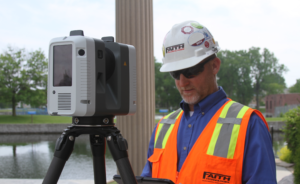10.02.2019
Technology and the Fun of ROI
 When people obtain new technology, they generally want to put it to immediate use, and who wouldn’t? Without even reviewing the quick startup guide, they often have new features in mind based on research or want to start discovering how a new tool or piece of technology can be put to good use. If it’s technology for a job, for example, they may want to develop processes and procedures on how the technology will be used so they can start to put it into practice. A final step might be to gather data to prove out the technology purchase and track its utilization.
When people obtain new technology, they generally want to put it to immediate use, and who wouldn’t? Without even reviewing the quick startup guide, they often have new features in mind based on research or want to start discovering how a new tool or piece of technology can be put to good use. If it’s technology for a job, for example, they may want to develop processes and procedures on how the technology will be used so they can start to put it into practice. A final step might be to gather data to prove out the technology purchase and track its utilization.
I recently had the privilege of speaking at an industry gathering about field technology tools, such as robotic total stations and 3D scanners, and the impact they have on safety and productivity specific to the projects that utilize technology. With robotic total stations, you can determine how many points are located for every minute the machine is on, as well as the layout accuracy. With 3D scanning, you can determine how many square feet are scanned and the length of time it took; even more powerful is the cubic feet measured.
Knowing this information and breaking these statistics into project types, site conditions and project deliverables allows us to use this information to not only produce an accurate return on investment (ROI), but to predict outcomes of the technology based on past data. This enables us to better schedule tool utilization to increase safety predictability, as well as productivity gains.
When purchasing new technology, you will undoubtedly receive some productivity and accuracy information from the vendor selling the technology, and for the most part it will be accurate. Keep in mind, though, that the information is an accumulation of averages that may not match your exact work. With years of tracking at Faith Technologies, we can tell you that using a robotic total station is more than 10 times more efficient than using string lines and tape measures, and that the use of 3D scanning is more than 90 times more efficient. If we dig deeper into how this information flows within our preconstruction, manufacturing and construction teams, we see even higher productivity gains. Even more importantly, from a safety standpoint, these tools allow us to perform most of our work at floor level versus using a ladder or lift.
I’m often accused of being a “numbers” guy. Good or bad, I’d say that describes my approach to reading the data we track. As my team uses these tools and teaches others how to use them, I’m often back at the office collecting and analyzing the data, so I can give you the ROI. Isn’t that why we invest in new technology?
If you enjoyed this blog article, please subscribe to stay up to date on the latest industry news from our experts at Faith Technologies.




